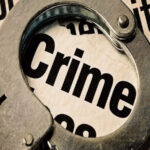The Supreme Court ruled on Monday that the November 2016 demonetisation of high-value currency notes was legal. The Constitutional bench, which included justices S Abdul Nazeer, BR Gavai, AS Bopanna, V Ramasubramanian, and BV Nagarathna, ruled that the notification for the exercise was valid and met the proportionality test. However, Justice Nagarathna was not convinced.
As he read the decision, Justice Gavai stated, “For a period of six months, the Centre and the RBI held consultations. We believe there was a reasonable connection to bring such a measure, and we believe demonetisation was not affected by the proportionality doctrine.” He continued, “The decision-making process cannot be criticised solely because the proposal came from the Central Government… The doctrine of proportionality cannot be used to invalidate action.”
Justice Nagarathna was of a different mind. “My views on each of the questions differed from Justice Gavai’s response to the questions he has framed,” she said. She stated that the authority to propose demonetisation stems from Entry 36 of List I, which deals with currency, coinage, and legal, rather than Section 26. (2).
Section 26(2) of the RBI Act of 1934 states that “on the recommendation of the [RBI] Central Board, the Central Government may, by notification in the Gazette of India, declare that, with effect from such date… any series of bank notes of any denomination shall cease to be legal tender except at such office or agency of the Bank and to such extent as may be specified in the notification.”
On November 8, 2016, Prime Minister Narendra Modi announced a ban on Rs 500 and Rs 1,000 currency notes, claiming that the ban would reduce the use of black money and counterfeit currency. It was also expected to boost online transactions.











More Stories
Pak PM: India Fired Brahmos Before Our Retaliation
देहरादून: सूर्यधार रोड पर भिड़ीं गाड़ियां, शख्स को कुचलने की कोशिश; 9 गिरफ्तार
शाहरुख खान संग ये खास शख्स भी नहीं था मौजूद, फिर भी ग्रैंड रहा अबराम का 12वां बर्थडे, सामने आया पार्टी का इनसाइड वीडियो